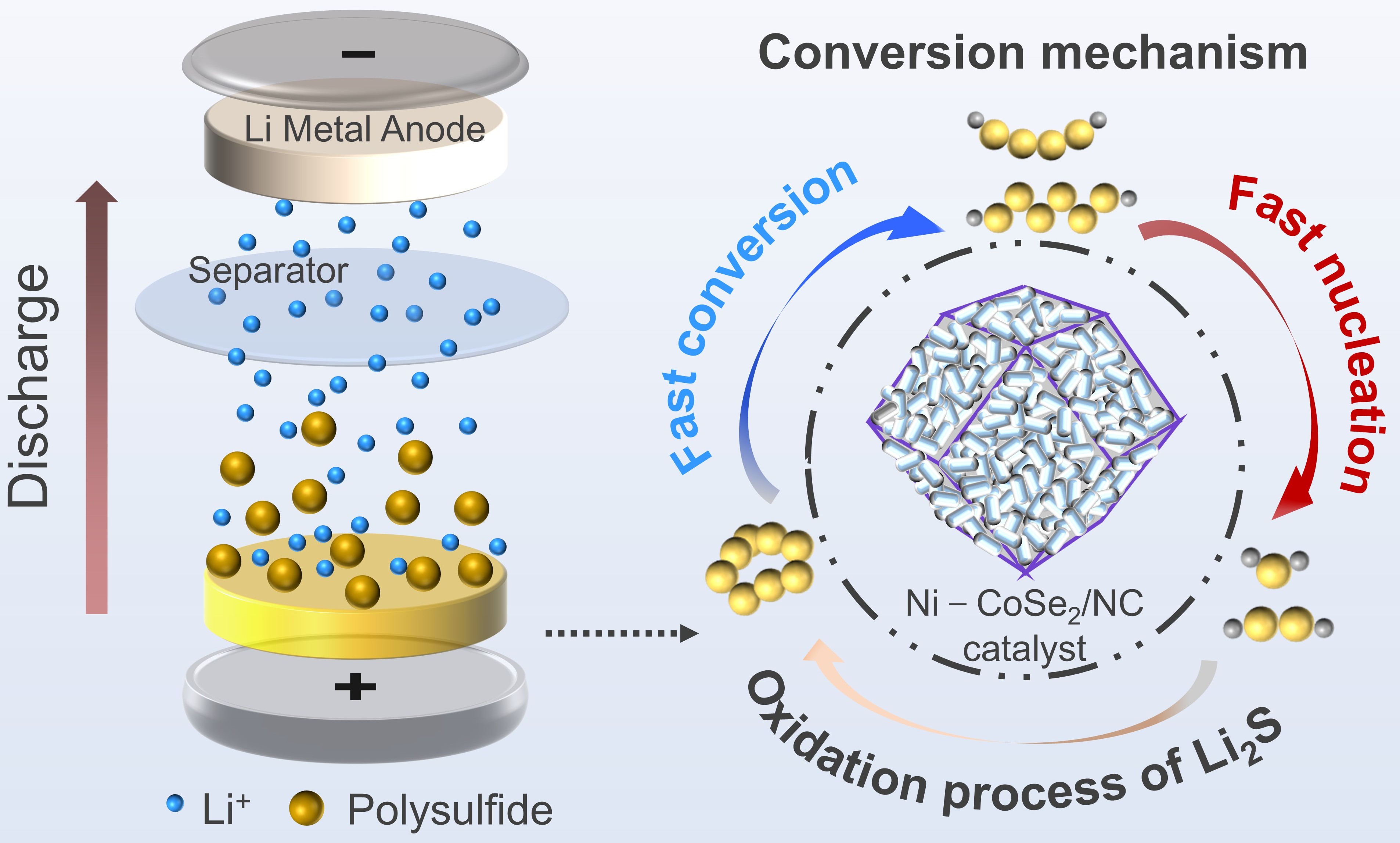Doping strategy for regulating CoSe2 electronic structure to enhance sulfur reaction kinetics in lithium-sulfur batteries
Submitted by Jun Zhu on Wed, 09/03/2025 - 10:02
Lithium-sulfur (Li‒S) batteries are regarded as highly promising next-generation energy storage technologies due to their high theoretical specific energy (2600 Wh kg–1), low cost, and the abundance of sulfur. However, their practical application is severely hindered by the shuttle effect of soluble lithium polysulfides (LiPSs) and sluggish sulfur redox kinetics, leading to rapid capacity degradation. The inherent electronic structure of CoSe2, employed as a catalyst, restricts its catalytic efficiency.
